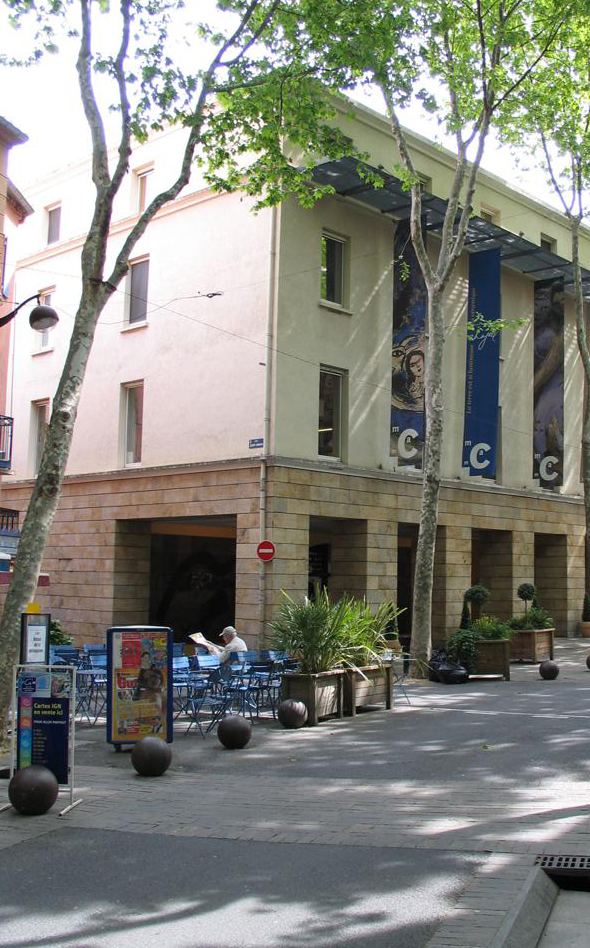Established 1950 Director Joséphine Matamoros | Visitors 80,000 (2006) Phone +33 4 68 87 27 76 | |
 | ||
Address 8 Boulevard Maréchal Joffre, 66400 Céret, France Hours Closed now Wednesday10AM–5:30PMThursday10AM–5:30PMFriday10AM–5:30PMSaturday10AM–5:30PMSunday10AM–5:30PMMondayClosedTuesday10AM–5:30PMSuggest an edit Similar Museum of Musical Instrumen, Tech, Pont du Diable, Musée Fleury, Museo Hyacinthe‑Rigaud | ||
Extrait extase mus e d art moderne de c ret
Le Musée d'Art Moderne de Céret is a modern art museum in Céret, Pyrénées-Orientales, France, created by Pierre Brune and Frank Burty Haviland in 1950 with the personal support of their friends Pablo Picasso and Henri Matisse who were involved in its creation.
Contents
- Extrait extase mus e d art moderne de c ret
- Dominique gauthier peintures 2009 2010 mus e d art moderne de c ret
- Prsentation
- Cubism in the Pyrnes
- Soutine in Cret
- Fleeing the Nazis in Cret
- Major artists and works represented
- References
Dominique gauthier peintures 2009 2010 mus e d art moderne de c ret
Présentation
From Cubism to the School of Paris, from Nouveau réalisme to Supports/Surfaces, the collections of the Museum shows the intense relationship between the city of Céret and some of the major artists of the twentieth century: Pablo Picasso, Georges Braque, Juan Gris, Chaim Soutine, Marc Chagall, Raoul Dufy, Auguste Herbin, Henri Matisse, Miró, Antoni Tàpies, Claude Viallat, and Toni Grand.
Cubism in the Pyrénées
In January 1910, the Catalan sculptor Manolo Hugué, convinced the painter Frank Burty Haviland, and the composer Déodat de Séverac to settle in Céret, a small Catalonian village of the Pyrénées-Orientales near the border with Spain. They invite their friends from Montmartre to move in, and from 1911 to 1913, in the midst of Cubism. Pablo Picasso discovers Céret in the summer of 1911 and invites his model and lover Fernande Olivier and Georges Braque, also a friend of Manolo Hugué to join him. In 1913, 1914 and 1915 his new lover Eva Gouel will also stayed with Picasso and model for him in Céret.
André Masson, Auguste Herbin, Max Jacob, Juan Gris, Jean Marchand will also come over to stay in Céret and soon a community of artist settles there. Some will return after the First World War - as Othon Friesz, Albert Marquet, Raoul Dufy and Jean Cocteau - joined later by a new wave of artists of Montparnasse.
Soutine in Céret
In 1919, Pierre Brune invite his former neighbour of the cité falguière, Chaim Soutine, to settle in Céret. Soutine, who is struggling to make an income in Paris where foreigners are stared aggressively, accepted with enthusiasm. Léopold Zborowski, the art dealer of his friend Modigliani decides to support him, and pays for the trip. Michel Kikoine will come to visit him for some months. In January 1920, he learned the death of Modigliani and the consecutive suicide of his pregnant girlfriend Jeanne Hébuterne. Shaken by the death of his friend, he stops to drink and observe the recommendations of doctors to heal. However, it is too late for his ulcer. Soutine is hurt, angry and wild, and lives outside the arts community. For nearly two years, he painted enormously. In the summer 1920, Zborowski picks nearly two hundred paintings. Then, Soutine made frequent trips between Céret and Cagnes-sur-Mer until 1922.
Fleeing the Nazis in Céret
A third wave of artists fleeing the Nazis during the Second World War takes refuge in the city, such as Tristan Tzara or Jean Dubuffet and Marc Chagall. Pierre Brune, Pinkus Kremegne and Frank Burty Haviland settle permanently in the city.
